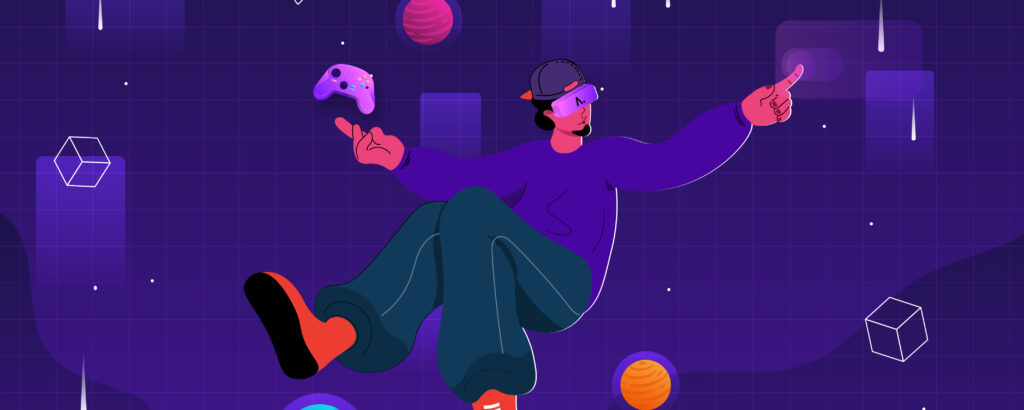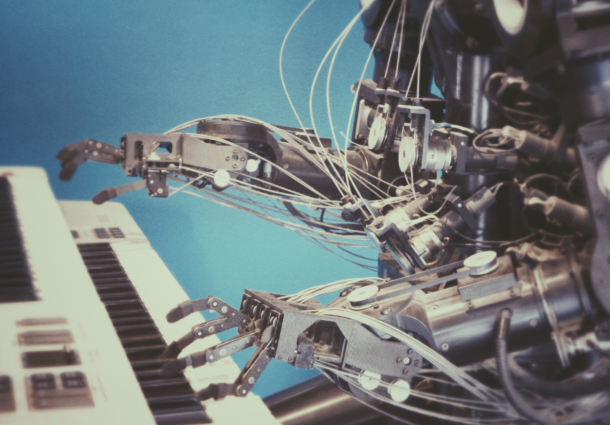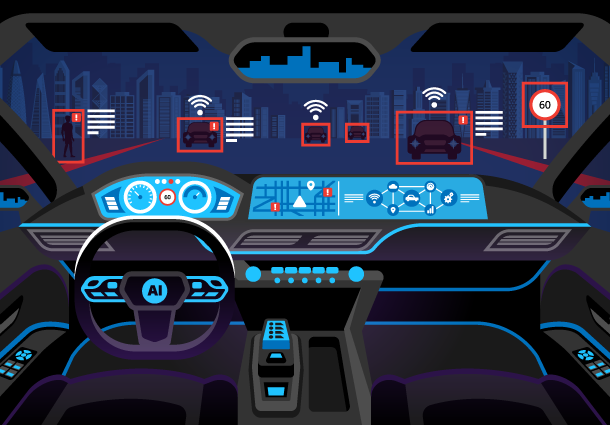Elevating Gameplay with AI and ML: A New Dawn in Video Games
The evolution of machine learning (ML) with artificial intelligence (AI) has introduced a period of unparalleled complexity and commitment to the universe of video games, where virtual worlds show signs of life. In addition to the fact that these state-of-the-art technology reforms have game development, in addition, player interaction, and experience with these virtual universes. Artificial intelligence and machine learning in game development consolidate human creativity with computer-driven decision-making. ML permits dynamic and individualized experiences in games by permitting them to adjust, change, 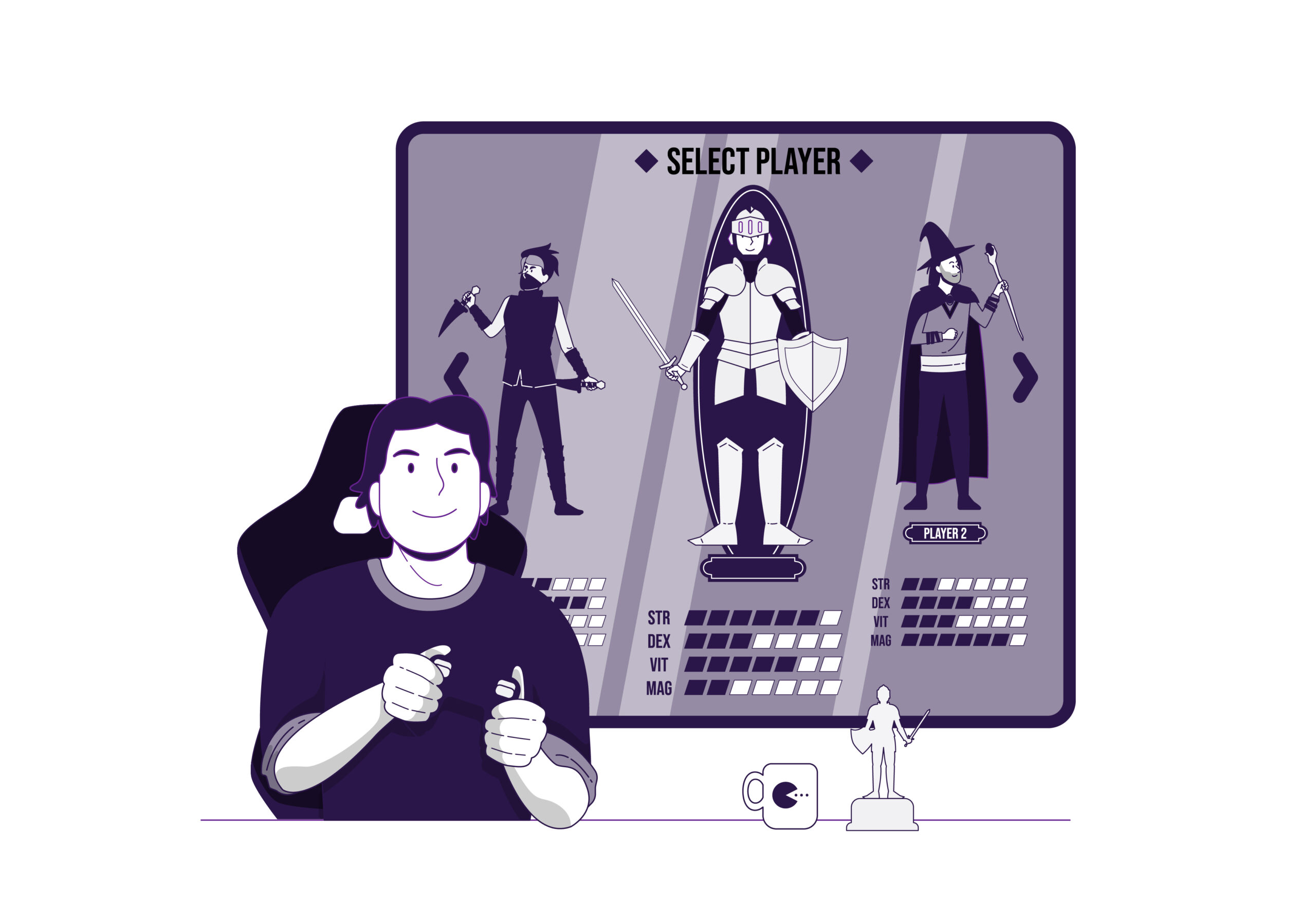 and react to client activities. On the opposite side, artificial intelligence (AI) empowers in-game animals to creatures to display human-like behavior, expanding authenticity and trouble. The utilization of ML and AI in game creation has changed the game.
and react to client activities. On the opposite side, artificial intelligence (AI) empowers in-game animals to creatures to display human-like behavior, expanding authenticity and trouble. The utilization of ML and AI in game creation has changed the game.
ML calculations look at player behavior to figure out choices and activities. AI-driven characters react realistically to player input and change with the game’s surroundings. As well as taking gaming higher than ever, these advances have also opened up a world of opportunities, from the creation of haphazardly generated game environments to the creation of complex NPCs (non-playable characters) that give gamers connect with narrating experiences. This blog will explore the progressive impacts of artificial intelligence and machine learning in the gaming sector. We’ll examine how machine learning and artificial intelligence are changing the gaming scene and giving players an unrivaled journey through virtual worlds, from dynamic difficulty modifications to realistic opponent behaviors.
The Quantum Leap: ML’s Role in Game AI
The gaming business, which is continuously changing and wildly aggressive, has recently found itself at the forefront of technological development. In this digital sphere, machine learning, a branch of artificial intelligence, has become, plainly, a distinct advantage. The gaming experience is changing in unbelievable ways on account of machine learning, which can dissect enormous datasets and acclimate to user inputs. The commitment of an extraordinary and engaging client experience is at the center of machine learning’s impact on gaming. The days of static game worlds are finished; today, real-time player behavior analysis permits ML algorithms to customize game landscapes, deterrents, and even storylines based on user inclinations. The result? Players are drenched in a dynamic, constantly changing virtual universes that react to their activities and advance commitment and excitement.
NPCs (non-playable characters) presently have great insight on account of ML-driven AI. The linear and predictable in-game foes are, at this point, not present. Presently, AI adjusts and learns, making each fight unique. Their activities look like human navigation, which expands the difficulty and unpredictability. This further develops gaming while likewise combining the genuine and virtual universes together. ML helps game makers in the background via automating testing, expanding resource distribution, and, in any event, making game content. Developers can develop expansive, varied game worlds without over-the-top manual labor because of procedural content creation, which is controlled by ML algorithms.
Reducing Lag, Increasing Thrills: ML’s Fast-Track in Gaming
Each millisecond matters in the feverish world of gaming. Gamers need vivid, seamless environments that react rapidly to their demands. With its amazing computing power, machine learning in gaming is emerging as the key empowering agent for making stunning experiences that reclassify the boundaries for responsiveness and speed. Massive datasets can be handled quickly by ML systems.  The game uses this expertise to improve different parts of the game workflow. Real-time decision-making of ML are fundamental for empowering smooth, high-speed gaming since it can produce pictures, diminish latency, and anticipate player movements. Predictive analytics is one of ML’s unique abilities. ML models can foresee a player’s future moves by continually analyzing player behavior and interaction patterns. Games may preload resources, alter rendering options, and change network communication because of this foreknowledge, which keeps them one stride ahead of the player’s expectations.
The game uses this expertise to improve different parts of the game workflow. Real-time decision-making of ML are fundamental for empowering smooth, high-speed gaming since it can produce pictures, diminish latency, and anticipate player movements. Predictive analytics is one of ML’s unique abilities. ML models can foresee a player’s future moves by continually analyzing player behavior and interaction patterns. Games may preload resources, alter rendering options, and change network communication because of this foreknowledge, which keeps them one stride ahead of the player’s expectations.
ML takes on latency head-on, the enemy of connecting with gameplay. By finding data transmission bottlenecks and proactively rerouting traffic for brief pauses, complex network optimization strategies can limit latency. Thus, actions translate to on-screen replies at the speed of thought in a gaming environment. Dynamic resource scaling for games is made conceivable by utilizing ML. ML algorithms anticipate the ascent during demand, for example, during significant online events, and circulate more server resources accordingly. This ensures continuous play even when a huge number of players are online on the double. Gaming experiences are advanced by machine learning. It expects player movements, eliminates slack, and ensures speedy, fluid gaming. Gamers will be moved into perpetually vivid, fast-paced virtual worlds by machine learning in the gaming industry that stretches the boundaries of speed and authenticity.
The Road Ahead: Machine Learning in Game Development
In the captivated world representing the future of gaming, machine learning expects the job of the main character and reworks the story to create previously unfathomable gaming experiences. The constraints of what is conceivable in the game industry are constantly growing as a result of persistent technological progression, and ML is at the cutting edge of this undeniably exhilarating turn of events. By cultivating exceptional personalized experiences, ML is ready to change the game industry. ML algorithms will make particular in-game impediments, adjust rival behaviors, and even customize narrative arcs to suit various players via cautiously examining player behavior, preferences, and skill levels. Therefore, every player’s game experience is as distinctive as they can be. On account of ML, Non-Player Characters (NPCs) are going to rule the gaming scene. The in-game settings will abound with certified characters and emotional reactions on account of these AI-driven creatures’ phenomenal authenticity. NPCs will cause each contact to appear as though a genuine human experience since they have the ability to learn and adapt.
The limits between game platforms will vanish due to ML. ML-powered frameworks will give smooth cross-platform play whether you’re on a console, PC, or mobile device, empowering companions and players from one side of the planet to meet up in a common virtual domain. Game universes fueled by ML will grow naturally. Based on player interactions and choices, the environment, economics, and even in-game politics will change. Players will encounter dynamic environments where their choices truly influence the game’s universe. This insurgency’s architect is machine learning, which has made worlds that are distinct to every player, filled by AI companions, and associated across platforms. As we continue ahead into this wild new gaming area, ML fills in as the beacon, giving boundless open doors and obscure boondocks for both players and designers.
The Future Beckons: AI and ML’s Continuing Impact on Gaming
Previously limited to pixels and polygons, the world of video games has developed into a powerful environment where Machine Learning and Artificial Intelligence now play crucial roles. The effect of artificial intelligence and machine learning in game development is groundbreaking as we go towards a world where pixels obscure the limits among truth and fantasy. The imperceptible puppet aces in the background coordinating versatile and dynamic gameplay experiences are ML algorithms. These algorithms examine how players act and modify in-game parts including difficulty settings, opponent techniques, and plot development progressively. 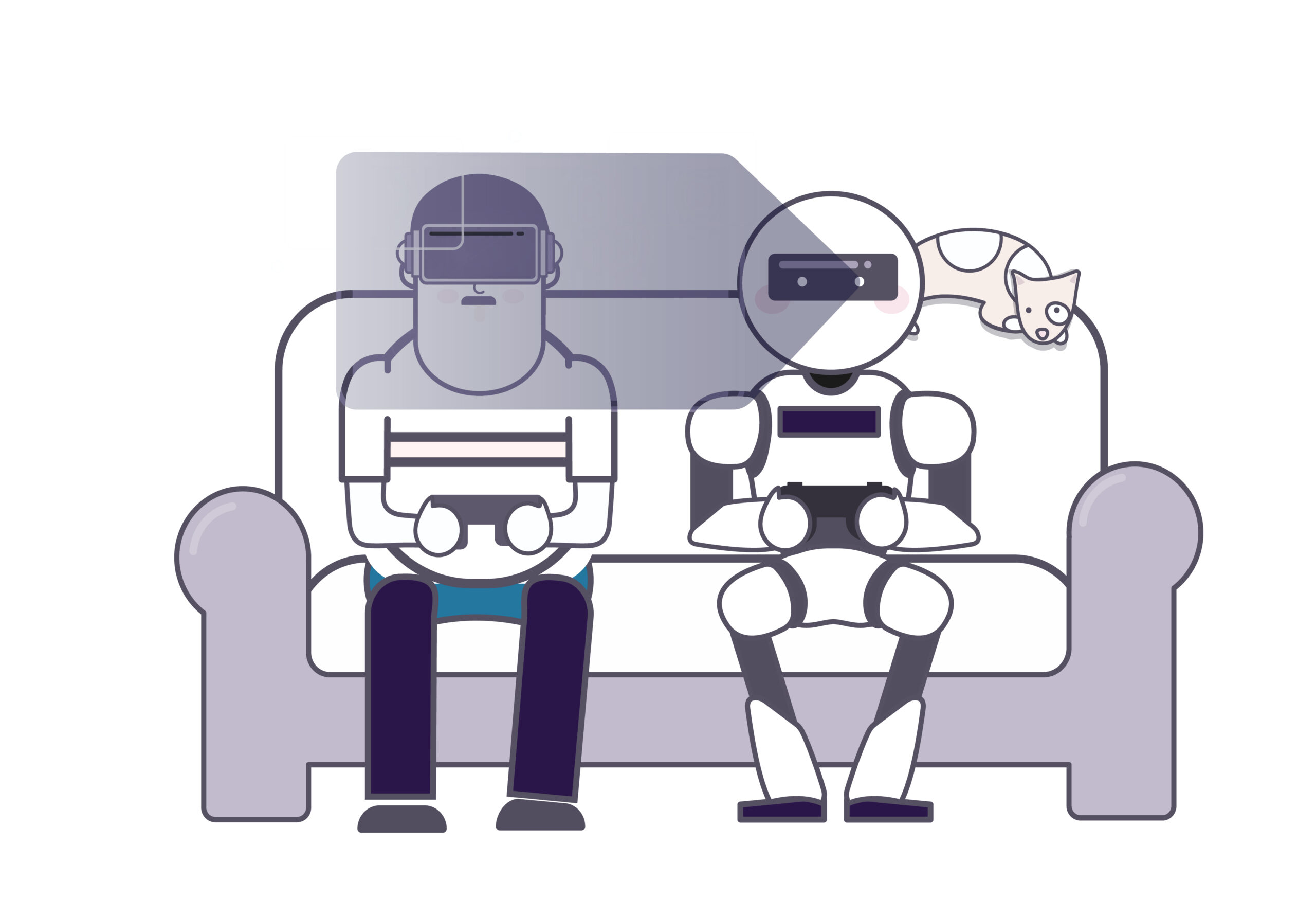 This ensures that every player’s journey through the game is extraordinary. Non-player characters (NPCs) come to life on account of AI and machine learning. They act, feel, and make choices like real people do in these virtual gaming characters. AI that consolidates ML gains from player collaborations, making unmistakable and unanticipated innkeepers. AI NPCs obscure the line between the virtual and the real, whether it’s speaking with a garrulous landlord or battling off sly foes.
This ensures that every player’s journey through the game is extraordinary. Non-player characters (NPCs) come to life on account of AI and machine learning. They act, feel, and make choices like real people do in these virtual gaming characters. AI that consolidates ML gains from player collaborations, making unmistakable and unanticipated innkeepers. AI NPCs obscure the line between the virtual and the real, whether it’s speaking with a garrulous landlord or battling off sly foes.
With careful precision, AI systems investigate player data. They let game designers adjust their works by anticipating player actions, inclinations, and even moods. These prescient algorithms reinvent player involvement by choosing the best in-game item and planning customized in-game activities. Hyper-realistic physical simulations and environments are delivered by ML. Each activity impacts the game environment because of ML algorithms, which consider tangible and realistic influence. Players are lowered in a universe where the laws of physics work similarly as a general rule. The blend of artificial intelligence and machine learning in game development envoys a recovery of the industry. Games are changing from static stories to dynamic universes that change contingent on the user. This mix reclassifies the future of this continually developing fine art by changing the demonstration of gaming into a significantly intimate, startling, and mesmerizing experience. The lines between the virtual and real worlds are jumbling, and machine learning and artificial intelligence are the manufacturers of this new era of interactive diversion where there are no limits to imagination.
Pattem Digital: The Need for Speed Meets Machine Learning
With a profound grasp of the complicated interactions between artificial intelligence and virtual worlds, our firm is the highest level of excellence in the field of machine learning services for gaming. We have used the sorcery of algorithms to make gaming experiences that go beyond convention. Our expertise rests in analyzing player behavior, creating adaptable stories, and summoning artificial intelligence creatures that mimic human acumen. By consolidating prescient analytics, extraordinarily realistic physics, and dynamic gameplay into our developments, we have permanently engraved our imprint in the archives of gaming. Our insight sparkles as a compass in the boundless gaming universe, pointing the area towards unimaginable vistas.
